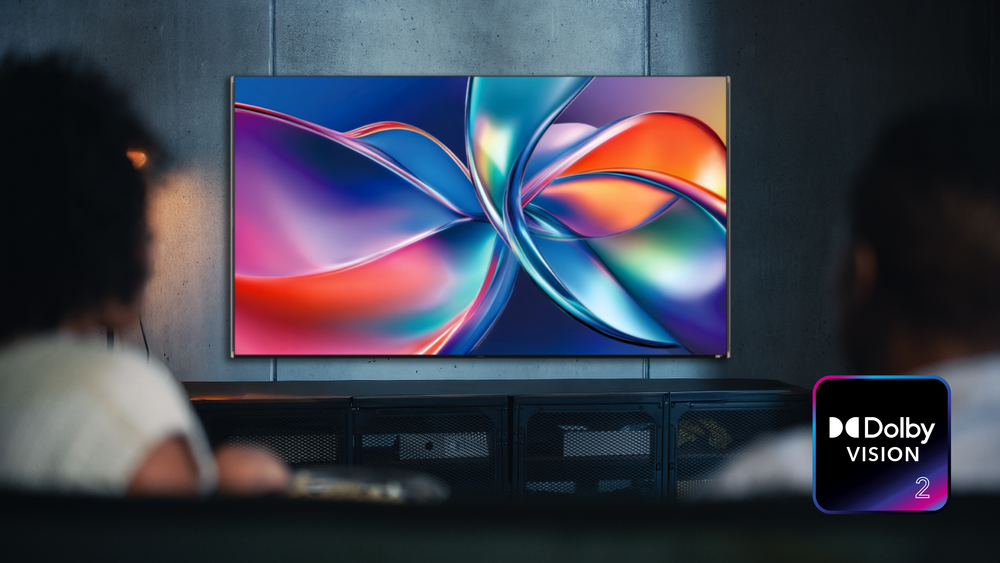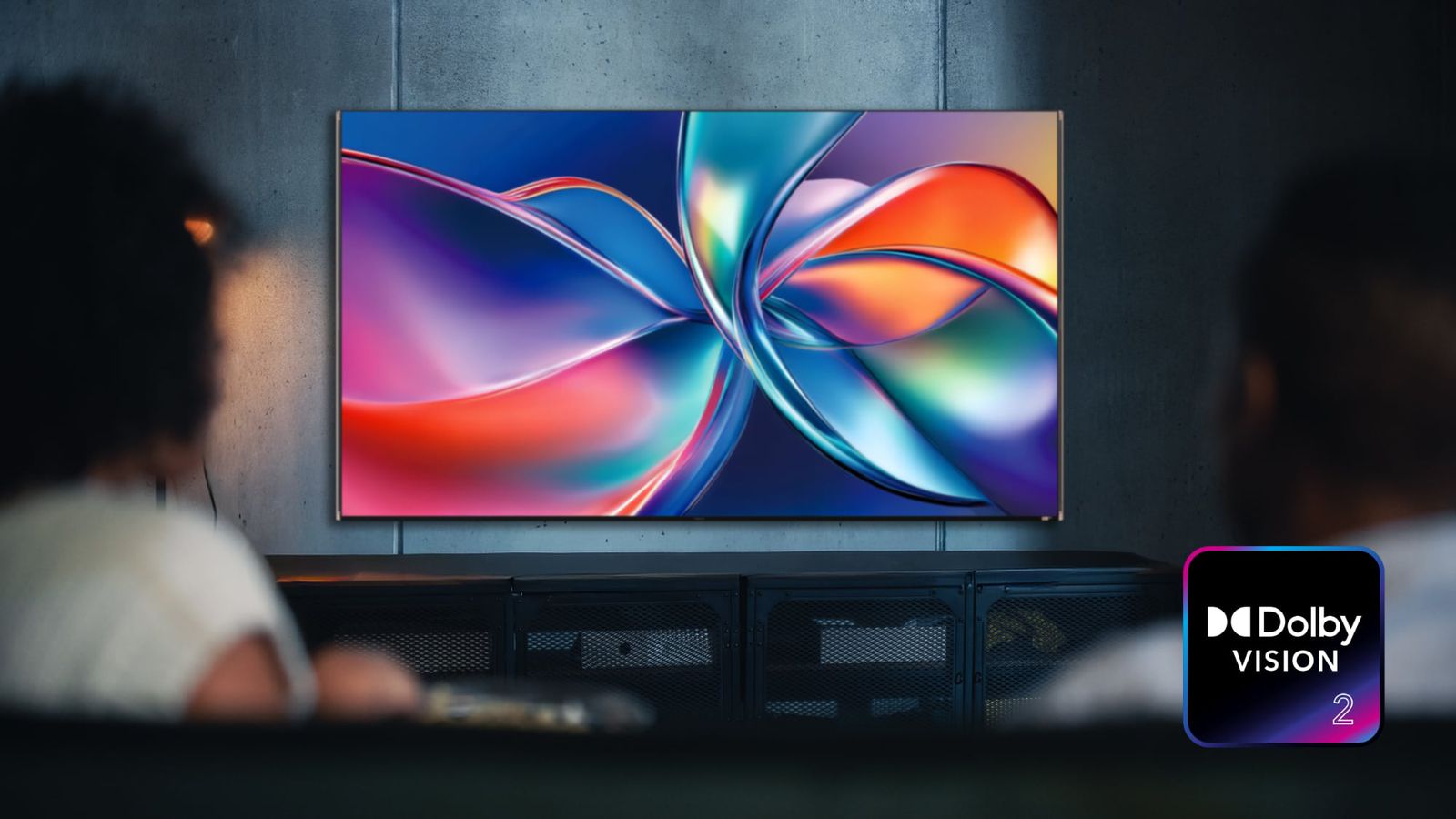Dolby Vision 2: Worth the Upgrade, Even on Budget TVs?
Dolby Vision 2: A New Era for TV Picture Quality
Unveiling Dolby Vision 2: An Overview
In its continuous efforts to introduce the latest innovations in the world of visual technologies, Dolby unveiled Dolby Vision 2 at IFA 2025. This release represents the new generation of the distinguished HDR technology, which promises an unprecedented enhancement in picture quality on modern televisions. During this event, we had the opportunity to explore the advanced features of this format, and in this article, we will provide a detailed technical analysis of them.
One of the most prominent questions raised about Dolby Vision 2 revolved around its ability to deliver noticeable improvements in picture quality, even on cost-effective TVs. This technology comes in two main versions: Dolby Vision 2 and Dolby Vision 2 Max. The advanced 'Max' version is expected to offer a wide range of additional features, specifically designed to enhance and adjust display quality superbly.

Dolby Unveils Dolby Vision 2: A New Era for TV Picture Quality
This raised questions about the true effectiveness of the basic Dolby Vision 2 version, especially with anticipation for the advanced features in the 'Max' edition. However, the live demonstration, which compared original Dolby Vision content with Dolby Vision 2, completely dispelled these doubts, confirming the noticeable improvements in the viewing experience.
Given that the demonstration included copyrighted footage, clear visual differences could not be documented through images or videos. Nevertheless, we can provide an accurate and detailed description of what was observed during this experience, to highlight the improvements offered by Dolby Vision 2.
Demonstration Details
The experience and Dolby Vision 2 demonstration took place on small Hisense A5 TVs, classified as entry-level or economic devices. These LCD screens feature Full Array Local Dimming backlight technology in addition to QLED technology, representing the maximum technical capabilities available in their category for achieving enhanced display quality.

Dolby Vision 2 Solves the Problem of Dark HDR Content
In a scene depicting camels in the desert, covered with fabric, the picture quality with Dolby Vision 2 appeared remarkably clearer and more vibrant. A significant improvement was observed in color saturation, with white tones becoming purer and brighter. Shadows and dark areas also appeared with greater depth and finer details, enhancing the visual realism of the scene.

Noticeable improvements in picture quality with Dolby Vision 2, highlighting superior contrast and vibrant colors.
“Dolby Vision 2 Enhancements” — Source: TechRadar.
Even the observed improvement in contrast made the image appear more detailed, although the resolution was identical on both devices. Contrast is a significant part of how our eyes perceive details, so improving it makes things appear sharper. In addition, the remarkable enhancement in contrast through Dolby Vision 2 contributed to making the image appear more detailed and precise, even with the actual resolution of both screens remaining identical. Contrast is a vital element in how the human eye perceives visual details, and therefore, its enhancement significantly contributes to adding more sharpness and depth to the final image, raising the overall display quality.
The desert scene was the most prominent in the demonstration in terms of dramatic improvement. However, other shots of natural landscapes featuring clouds accumulated around the sun also revealed fine and enhanced details in highlight areas. Instead of the clouds appearing as a uniform white mass at maximum screen brightness levels, Dolby Vision 2 technology showed light and rich gray color gradients around the sun, adding greater depth and realism to these shots.
Other shots of a person applying dark black makeup under their eyes showed significant and interesting improvements in black tone processing. The image appeared with greater accuracy, with deeper black tones that helped to highlight the person's cheek details and features clearly. Not only was the black color clearer and deeper, but it also contained fine color details under the makeup, reflecting Dolby Vision 2's ability to deliver a visually rich and detailed experience.
This scene served as further confirmation of the outstanding improvement in contrast offered by Dolby Vision 2. Light reflections on the black makeup appeared clearer and more precise, adding a touch of realism and depth to the image, and making the viewing experience more convincing.
In some natural scenes, a noticeable improvement in overall screen brightness was observed; the entire image appeared brighter and more luminous, not just the high-light areas. This highlights Dolby Vision 2's ability to improve overall visual performance.
Dolby Vision 2 Goes Beyond HDR
With all the above, I noticed some scenes where the colors in Dolby Vision 1 looked slightly more vibrant, or where Dolby Vision 1 generally appeared more natural. But overall, I believe that Dolby Vision 2 was a clear step forward, and its improvements surpassed the aspects where DV1 was preferred.
Dolby Vision 2: What Are the Key Technical Changes and Improvements?
The reader may notice the repetition of the word 'noticeable' in the description of the improvements, and this is because the apparent luminosity in Dolby Vision 2 often does not stem from an actual increase in the brightness of the Hisense TV panel, but from smarter image processing that enhances the visual perception of brightness.
Tom Graham, Director of Image Content Solutions at Dolby Labs, explained that Dolby Vision 2 did not change the color or High Dynamic Range (HDR) specifications for creators; the capture process still occurs in the usual way. The development lies in how this data is processed and displayed.
The improvements in Dolby Vision 2 primarily stem from its superior ability to provide TVs with a greater amount of precise image data on how to display the picture, exactly as specified by creators during Dolby Vision content encoding. It's not about adding new data, but about intelligently and maximally utilizing existing visual data to deliver an enhanced viewing experience.
Precision Black Feature
One of the most notable new features in Dolby Vision 2 is the Precision Black capability. This feature allows creators to integrate precise information about their bias lighting, in addition to an indicator for determining the first discernible point when transitioning from pure black to near-black shades, where subtle details remain visible. This enhances shadow depth and prevents loss of detail in dark scenes.
It is likely that this bias lighting data is the main factor behind the noticeable black level improvement, contributing to greater realism in the image. Furthermore, the dedicated indicator for adjusting the transition from black aims to prevent dark scenes from appearing too dim on TVs with limited dark processing capabilities. This ensures the preservation of fine details within dark tonal gradations and prevents them from blending, providing a clearer viewing experience.
The Smart Image Processing Engine
Not only that, Dolby has also developed and improved its image processing engine, which adapts image data to suit each television individually. Tom Graham stated: 'We have precise data for color definition as well as pixel clarity, which enables us to conduct next-generation analysis. We effectively deconstruct the image structure and reconstruct it in a way that allows TVs with fewer capabilities, in terms of contrast, image detail, and color performance, to reproduce and display the image with enhanced quality. This process is dynamic, and it is displayed directly on the screen based on the advanced image analysis we apply in Dolby Vision 2.'
During the demonstration, a full setup was shown comparing Dolby Vision 2 and Dolby Vision 1, confirming that both the video and the television were fully equipped to support DV2. When playing Dolby Vision 1 content on a TV supporting Dolby Vision 2, some visual improvements are expected, thanks to the enhanced smart image analysis that DV2 applies to the HDR data present in DV1. However, essential advantages such as Precision Black control will be lost, as this advanced information is only recognized by Dolby Vision 2 TVs and ignored by devices running Dolby Vision 1.
Future Availability
Despite the strong admiration for the results delivered by Dolby Vision 2, users should not expect this technology to reach current low-cost TVs. It is unlikely that updates for Dolby Vision 2 will be released for currently available TVs in the market.
However, for future affordable TVs, Dolby Vision 2 represents a real and promising upgrade. This largely depends on Dolby's ability to convince major streaming services and creators to adopt this technology, which will open new horizons for widespread enhanced viewing experiences.
